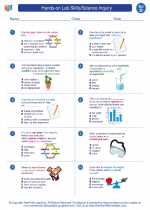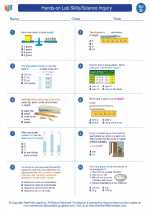Ordovician Period
The Ordovician period is the second period of the Paleozoic Era, spanning approximately 41 million years from about 485.4 to 443.8 million years ago. It is named after the Celtic tribe of the Ordovices, and it is known for significant evolutionary events and environmental changes.
Key Events and Characteristics:
- Warm and stable climate
- Extensive shallow seas
- Diversification of marine life
- First appearance of jawless fish
- Great Ordovician Biodiversification Event (GOBE)
- Formation of the first coral reefs
Study Guide
1. Climate and Geography
During the Ordovician period, the Earth's climate was relatively warm and stable. The presence of extensive shallow seas contributed to the diversification of marine life.
2. Marine Life
The Ordovician period saw a remarkable increase in the diversity of marine life. This period is often associated with the Great Ordovician Biodiversification Event (GOBE), during which many new species evolved.
3. Evolutionary Milestones
The Ordovician period marked the first appearance of jawless fish, an important evolutionary development in the history of vertebrates. Additionally, this period witnessed the formation of the first coral reefs, which further contributed to the richness of marine ecosystems.
4. Extinction Events
Though not as well-known as the mass extinctions of the later periods, the Ordovician period did experience some extinction events, particularly among marine organisms. Understanding the causes and effects of these events is an important aspect of studying this period.
[Ordovician] Related Worksheets and Study Guides:
.◂Science Worksheets and Study Guides Fourth Grade. Hands-on Lab Skills/Science Inquiry

 Worksheet/Answer key
Worksheet/Answer key
 Worksheet/Answer key
Worksheet/Answer key
 Worksheet/Answer key
Worksheet/Answer key
